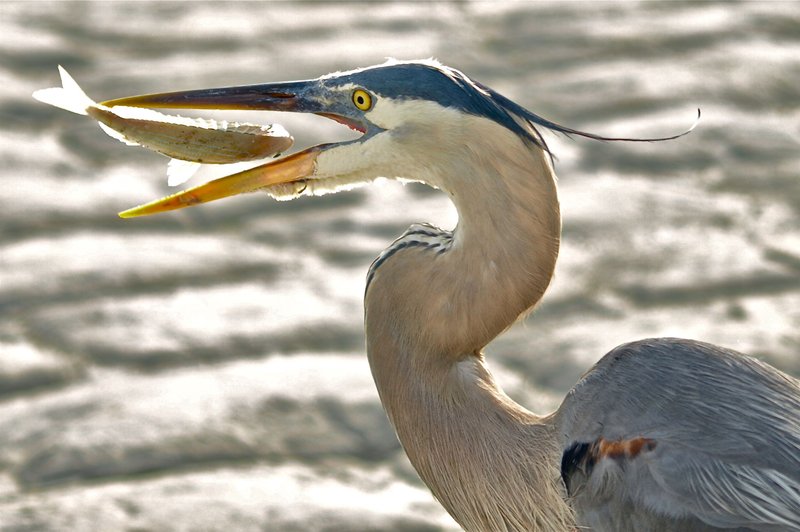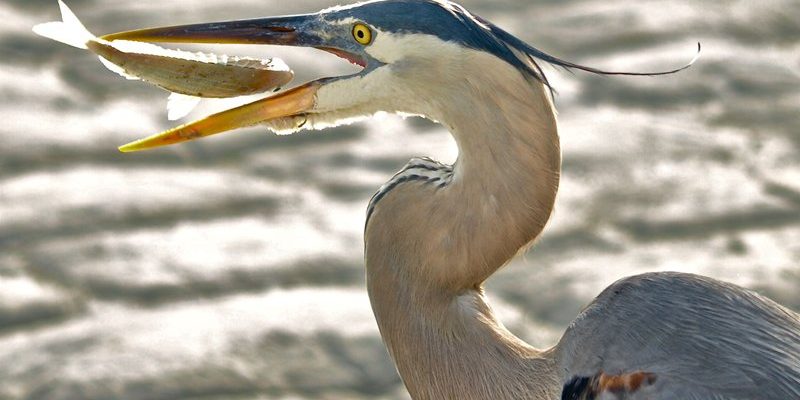
Surprisingly, herons don’t just rely on luck to fill their bellies. These birds have a specific diet that varies based on their habitat and the season. From fish and amphibians to insects and small mammals, herons are quite versatile in their dining options. Throughout this article, I’ll break down what herons typically eat and how they hunt or forage effectively. So grab a cup of coffee, settle in, and let’s get to know these wonderful birds a little better!
Heron Diet: What Do They Eat?
Herons are mostly carnivorous, which means they primarily eat meat. However, their diet can vary quite a bit depending on their environment. Here’s a snapshot of some of their favorite meals:
- Fish: This is the standout item on a heron’s menu. They are especially fond of small fish like minnows and shiners.
- Amphibians: Frogs are another favorite meal. Herons can find these slimy creatures lounging near water, making them an easy catch.
- Invertebrates: They often feast on various insects, crustaceans (like crayfish), and even worms.
- Small Mammals: Occasionally, herons may snatch up small mammals like young rodents or rabbits if the opportunity presents itself.
Honestly, the adaptability of herons is impressive. Depending on the available food sources, these birds can adjust their diet. For example, in a freshwater habitat, they might focus more on fish and frogs, while in a saltwater environment, they may catch crabs or shrimp.
How Herons Hunt: Stealthy Techniques
When it comes to hunting, herons are masters of patience. You might see them standing motionless in shallow water, neck extended and focused. This method is called “still hunting.” They wait quietly, scanning the water for any signs of movement. Once they spot a potential meal, they’re quick to strike.
Their hunting strategy is fascinating because it involves a combination of keen eyesight and lightning-fast reflexes. Herons have excellent vision, which allows them to detect even the slightest movement in the water. When they see something worth catching, they’ll use their sharp beaks to grab it in a quick, fluid action.
Another technique herons use is called “stalking.” This is where they slowly and quietly move towards their prey. You might think of it like a game of cat and mouse—just a lot taller and with a beak! They’ll take small, careful steps, trying to remain as unnoticed as possible before making their move.
Feeding Habits: How They Forage
Herons are not just about hunting fish; they are skilled foragers, which means they sometimes look for food in other ways. One of the common foraging techniques is searching. They might patter along the shore, kicking up mud and debris to uncover hidden snacks.
Another interesting method is grazing. This involves moving through shallow water and snapping up whatever comes their way. It’s a mix of hunting and foraging that allows them to take advantage of whatever food is available. You might see a heron take a few steps, pause, and then use its long neck to reach down into the water for a scrumptious snack.
Interestingly, herons are also known to use tools while foraging! They’ve been observed dropping sticks or leaves into the water to attract fish. It’s a clever trick that not many animals can claim. This ability to think outside the box really showcases their intelligence.
Seasonal Variations in Diet
The heron’s diet can also change with the seasons. In spring and summer, when waterways are teeming with life, their meals tend to be more diverse and plentiful. This is when you’ll see them indulging in all sorts of fish and amphibians.
As fall approaches, their focus might shift a bit. Some herons will migrate to warmer areas where food is more abundant, while others will adapt by finding food sources in their local environment. In the winter months, their diet can become more limited, focusing on whatever is still available.
You might wonder how these seasonal changes impact the heron’s health. Fish and frogs are high in protein, which is crucial for maintaining energy during migration. So, you can see how the heron’s ability to adapt is key to its survival.
The Role of Habitat in Feeding
Herons are highly adaptable birds that thrive in various habitats, from wetlands and lakes to coastal shorelines. Their feeding habits are greatly influenced by where they live. For instance, herons found in freshwater environments might primarily dine on fish and frogs, while those along coastal areas often have a diet rich in crustaceans and marine life.
The choice of habitat also plays a significant role in how herons hunt. In thicker, vegetated areas, they may need to navigate through reeds and grasses, relying more on stealth than speed. Conversely, in open water, they can use their speed and agility to chase after fish.
You might be surprised to learn that herons can also be quite sociable when it comes to feeding. They often hunt in groups, especially during migration or in areas with plenty of food. Think of it like a dinner party, where they can share tips on where to find the best snacks!
Health and Diet: A Perfect Balance
Just like us, herons need a balanced diet to stay healthy. A variety of foods ensures they get the proper nutrients necessary for survival and reproduction. Interestingly, herons can sometimes face health issues related to their diet—like consuming contaminated fish in polluted waters.
To prevent such issues, herons rely on instinct when choosing their meals. They often avoid areas that seem overfished or unhealthy. It’s a natural survival technique that helps keep them fed and thriving.
Also, while many herons are migratory, they often return to breeding grounds that ensure access to ample food sources. This cycle reinforces the connection between their diet and overall health.
Interesting Facts About Heron Eating Habits
Let’s wrap things up with some interesting tidbits about herons that you might find fun!
– Adaptability: Herons can live in a variety of environments, so their diet is incredibly flexible. They have even been observed eating small mammals when fish are scarce.
– Family Affairs: Young herons learn to hunt by watching their parents, which is a great example of “learning through observation” in the animal world.
– Diverse Diet: Some herons occasionally consume plant matter, although it’s not a large part of their diet. It’s a bit like having dessert after a meal— they seem to prefer a focus on protein.
– Social Eatery: As mentioned earlier, herons can be social eaters and often hunt in groups, which not only helps them find food faster but also offers protection against predators.
By understanding what herons eat and how they hunt or forage, you’ll appreciate these graceful birds even more. Next time you spot one standing still by the water, you’ll know exactly what it’s up to!
In conclusion, herons are remarkable birds with unique feeding habits that showcase their adaptability and intelligence. From their varied diets to innovative hunting techniques, these birds remind us of the beauty of nature and the delicate balance of ecosystems. So, whether you’re a birdwatcher or just a curious observer, there’s always something new to learn about the enchanting heron!

